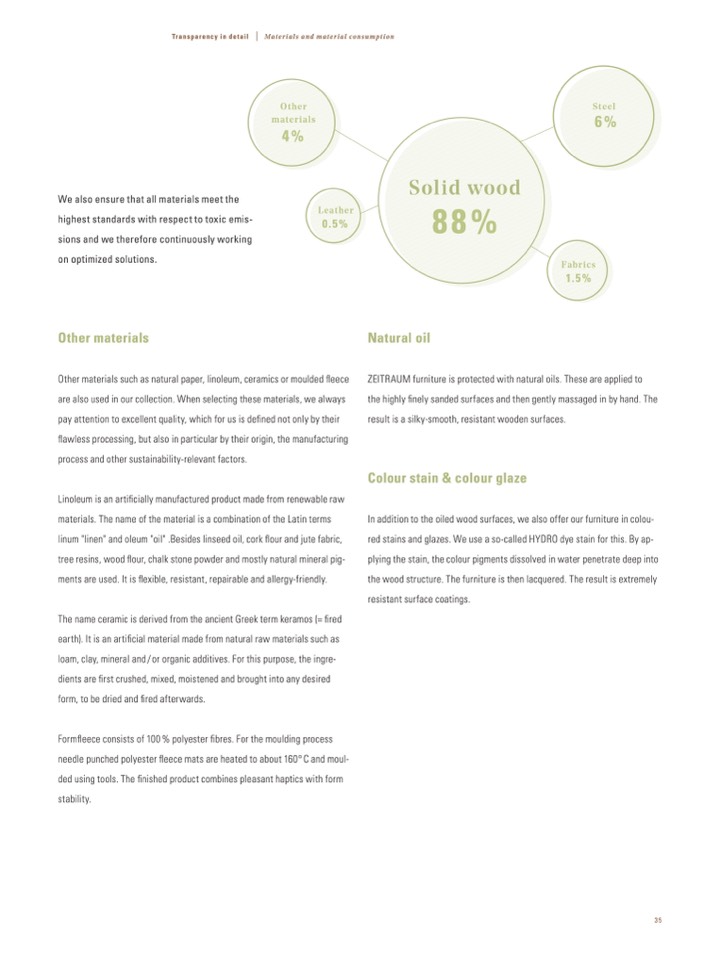
Transparency in detail
Materials and material consumption
We also ensure that all materials meet the
highest standards with respect to toxic emis-
sions and we therefore continuously working
on optimized solutions.
Other materials
Other
materials
4%
0.5%
Solid wood
88%
Steel
6%
Fabrics
1.5%
Leather
Other materials such as natural paper, linoleum, ceramics or moulded fleece
are also used in our collection. When selecting these materials, we always
pay attention to excellent quality, which for us is defined not only by their
flawless processing, but also in particular by their origin, the manufacturing
process and other sustainability-relevant factors.
Linoleum is an artificially manufactured product made from renewable raw
materials. The name of the material is a combination of the Latin terms
linum "linen" and oleum "oil" .Besides linseed oil, cork
flour and jute fabric,
tree resins, wood flour, chalk stone powder and mostly natural mineral pig-
ments are used. It is flexible, resistant, repairable and allergy-friendly.
The name ceramic is derived from the ancient Greek term keramos (= fired
earth). It is an artificial material made from natural raw materials such as
loam, clay, mineral and / or organic additives. For this purpose, the ingre-
dients are first crushed, mixed, moistened and brought into any desired
form, to be dried and fired afterwards.
Formfleece consists of 100 % polyester fibres. For the moulding process
needle punched polyester fleece mats are heated to about 160° C and moul-
ded using tools. The finished product combines pleasant haptics with form
stability.
ZEITRAUM furniture is protected with natural oils. These are applied to
the highly finely sanded surfaces and then gently massaged in by hand. The
result is a silky-smooth, resistant wooden surfaces.
Colour stain & colour glaze
In addition to the oiled wood surfaces, we also offer our furniture in colou-
red stains and glazes. We use a so-called HYDRO dye stain for this. By ap-
plying the stain, the colour pigments dissolved in water penetrate deep into
the wood structure. The furniture is then lacquered. The result is extremely
resistant surface coatings.
Natural oil
35

